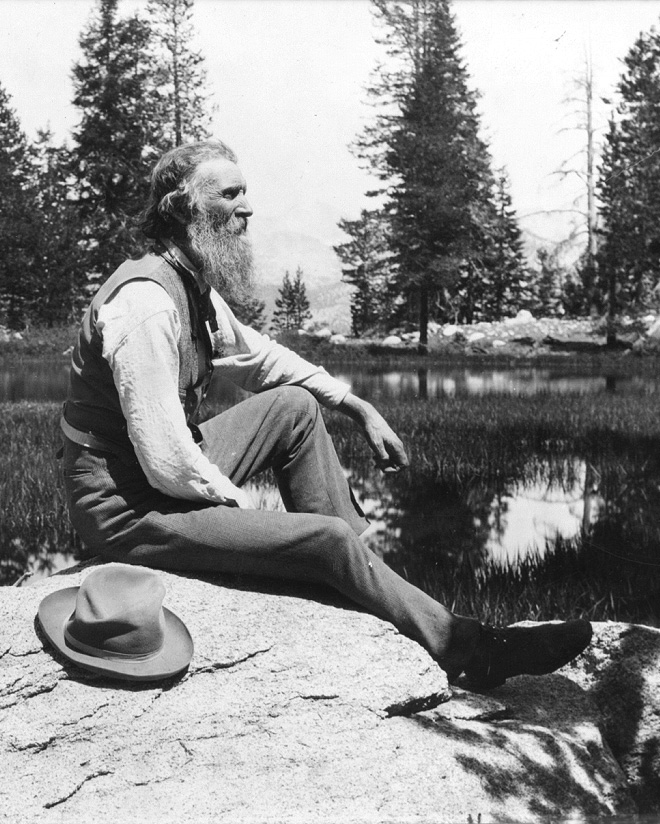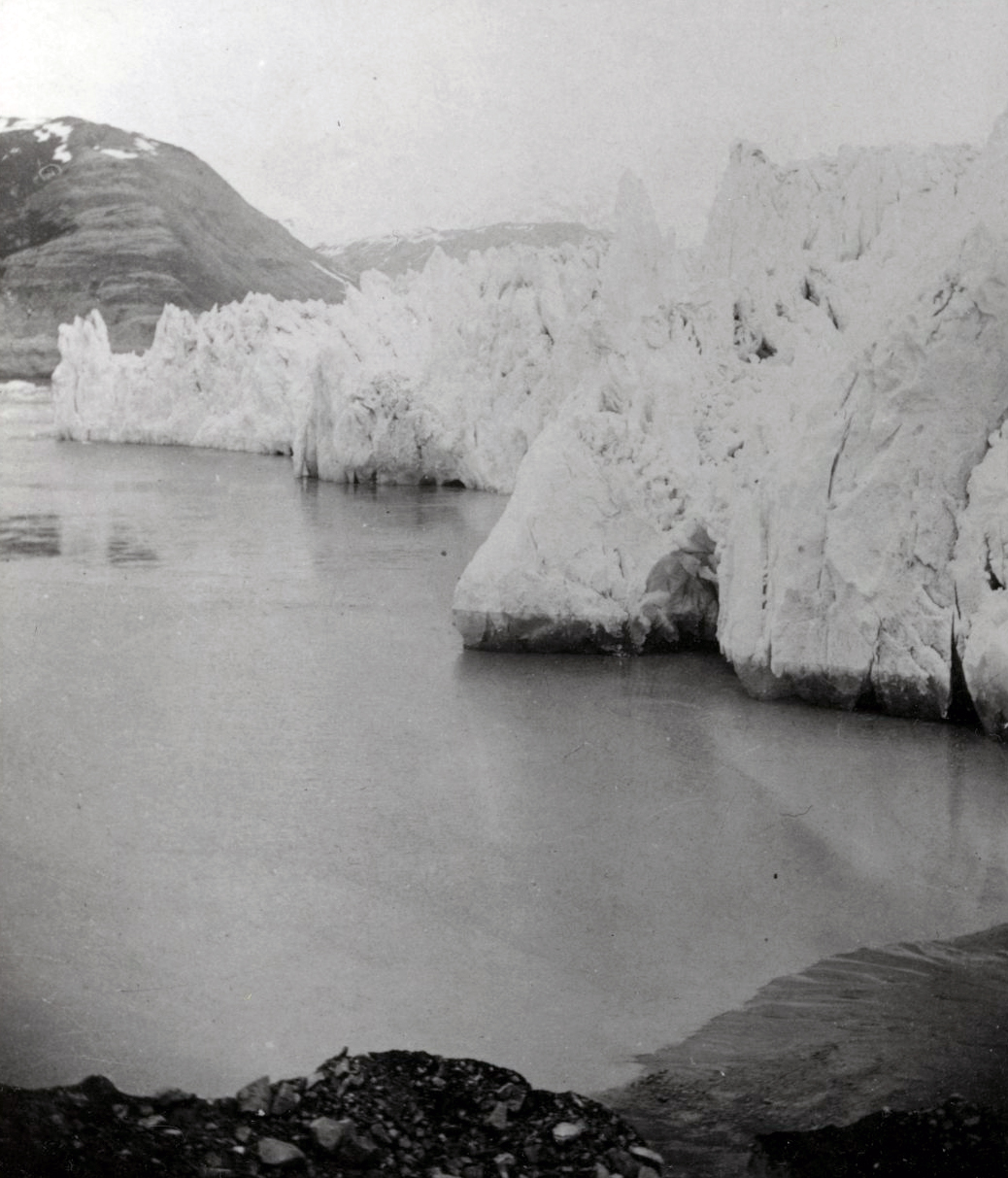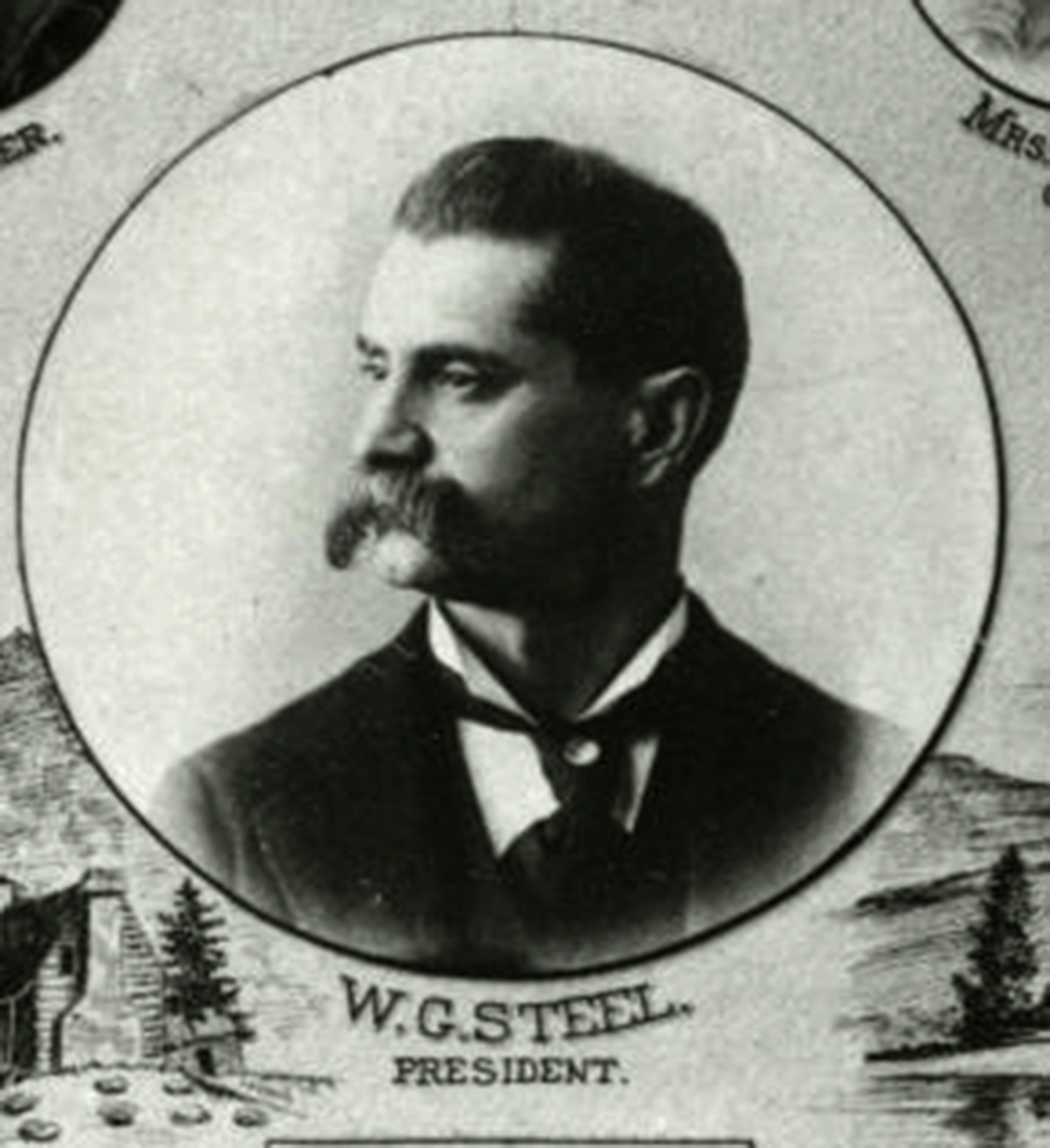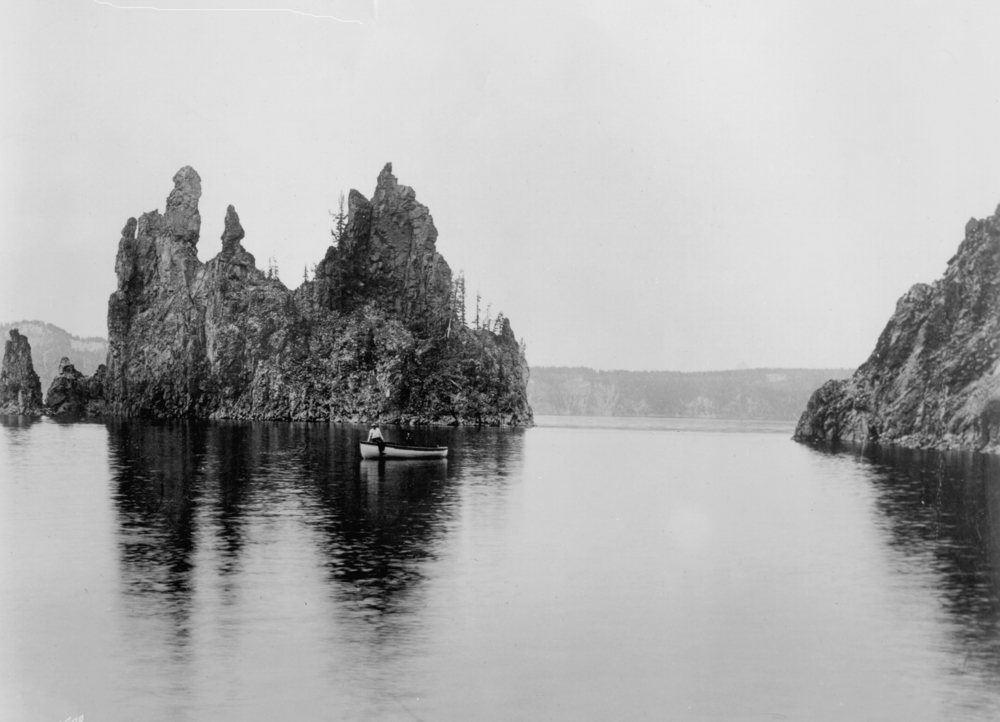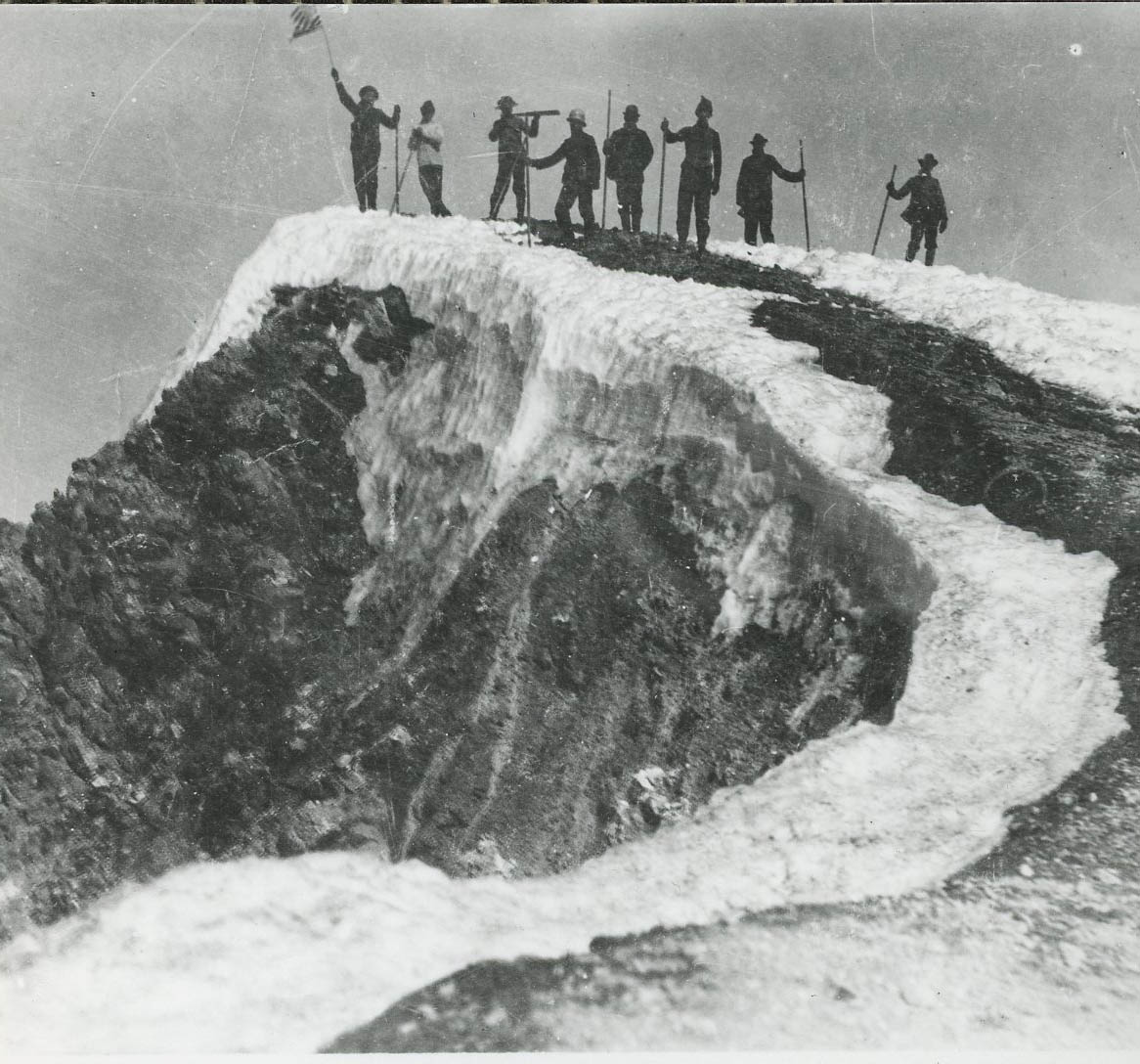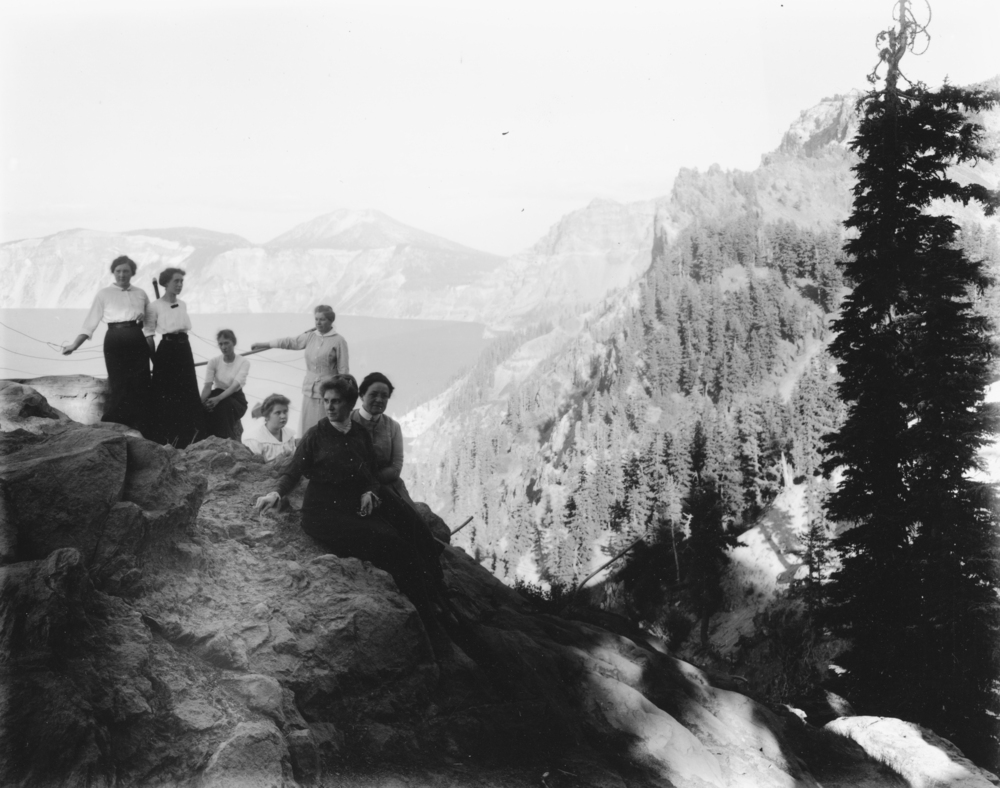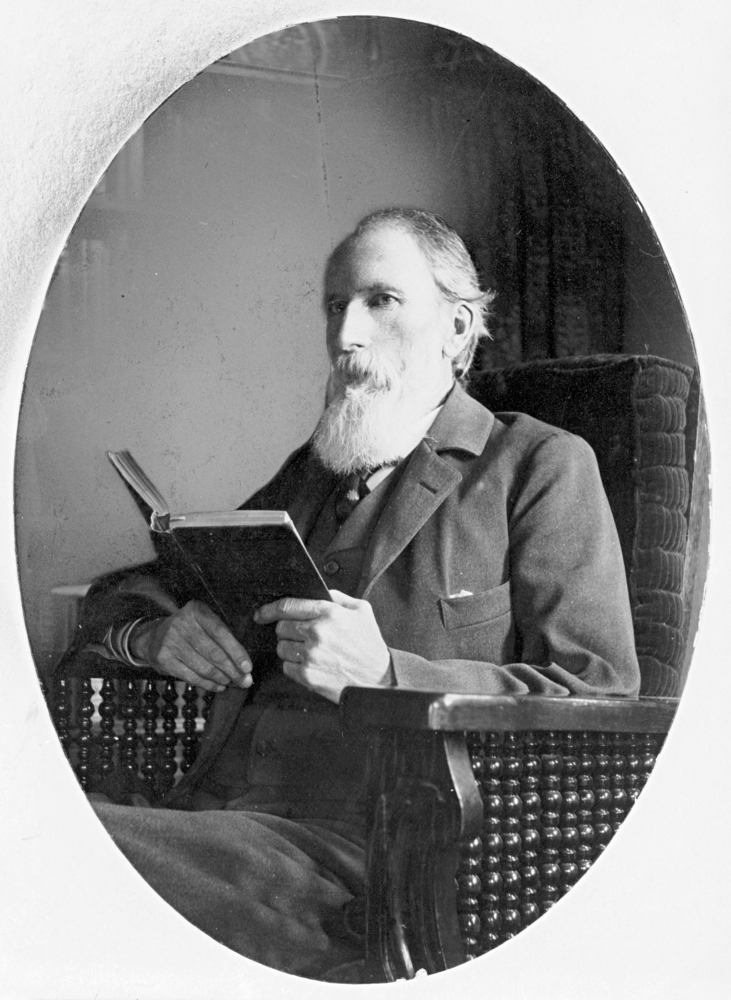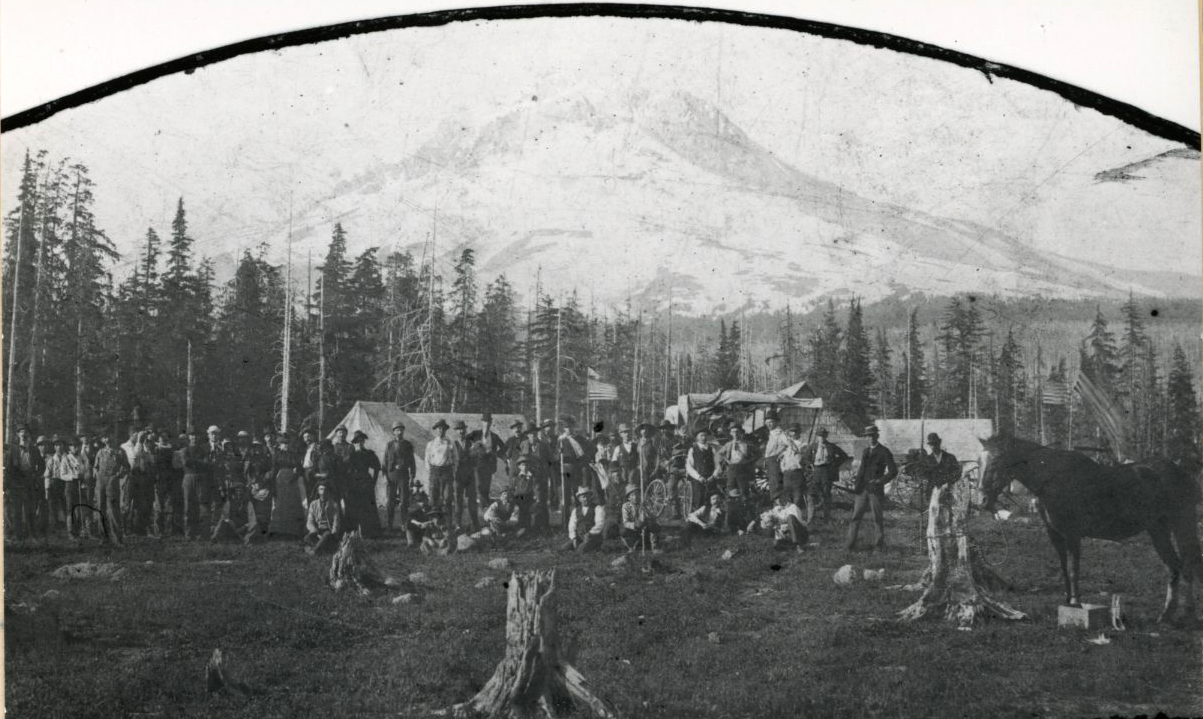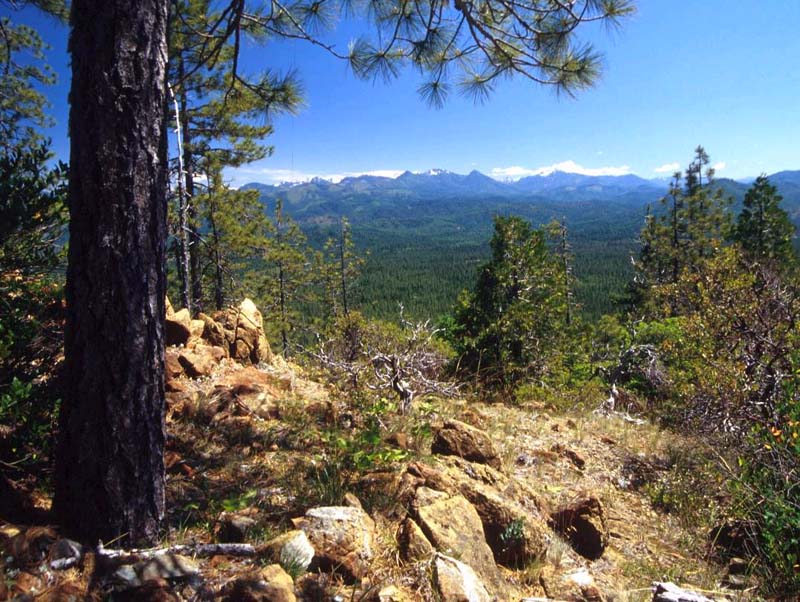John Muir (1838-1914) was America’s pioneer conservationist and an outspoken advocate for the protection of forests, parks, and wilderness. Born in Scotland, he is best known for his wilderness writings and explorations and for his tireless work to establish and protect Yosemite National Park. In 1868, he left his family’s homestead in Wisconsin and hiked to the Gulf Coast, traveled to California, and explored the Sierra Nevada and Alaska before visiting the Pacific Northwest in 1879.
Muir’s longstanding relationship with Oregon began in the 1870s when he became interested in the forests and glaciers of the Cascade Mountains. On his return from six months in Alaska in 1880, he was “pounced upon” in Portland, to present three impromptu lectures about his Alaskan adventures. Speaking to standing-room-only crowds, he “talked of the youth of the world, the present morning of creation and the beginning of the work of the infinite.”
Muir first hiked and camped in the Pacific Northwest in 1888, visiting the Columbia River Gorge, Multnomah Falls, the Cascade Mountains, and Crater Lake, as well as climbing Mount Rainier in Washington. In his book, Steep Trails, that includes the essays about this trip, he described Mount Hood as the “ruling spirit of the landscape,” noted with concern the “fierce storm of steel that is devouring the forests,” and recommended that “a park of moderate extent might be set apart” in the Cascades to be “protected for public use forever.”
Muir’s early visits to the region were as important as his writings about Oregon and the Pacific Northwest, because they allowed him to meet local mountaineers and others sympathetic with his views about wilderness. He talked with William Gladstone Steel, the founder of Crater Lake National Park, and Oregon Supreme Court Justice John B. Waldo, the chief advocate for the Cascade Forest Reserve (about 4.5 million acres along the crest of the Cascades from the Columbia River to Crater Lake, established in 1893). Their meetings were the foundation for the conservation movement in Oregon and California, especially between Muir’s Sierra Club (founded in 1892) and Steel’s Mazamas (founded in 1894).
Muir returned to Oregon in 1896 with the National Forestry Commission, which was charged with studying the newly established Forest Reserves (later to become national forests and national parks). The Oregon congressional delegation was attempting to reduce the size of the Cascade Forest Reserve and undo support for public ownership and protection of the Forest Reserves in the West. Steel and the Mazamas met at Crater Lake with Muir and other Sierra Club members, and together the groups strongly and unalterably opposed the reduction of the Cascade or any forest reservation. The successful campaign protected what remains the core of the national forest and wilderness system in the Cascades.
Muir stopped in Portland in 1899 to join the Alaska Expedition organized by Edward Harriman, then head of the Union Pacific Railroad and later the Southern Pacific, which began a new "partnership" to support the conservation movement. While in Portland, he once again spoke in defense of the Cascade forests and wilderness, stating that "it is unreasonable to suppose…that they should be destroyed or imperiled for any local convenience, as a mere present to men engaged in one local industry….they are the property of the nation and for its greatest good." At a reception hosted by the Mazamas, Muir advocated for protecting the Forest Reserves from grazing; and in discussions with Steel, Judge M.C. George, and L.L. Hawkins, the climbing club’s leaders, they "promised to do what they could against sheep pasture in the Rainier Park and also in the Cascade Reservation."
Muir's final trip to Oregon was to Harriman's Pelican Bay Lodge on Klamath Lake in 1908. During that visit, Harriman induced Muir to dictate the first part of his autobiography, which he expanded and published in 1912 as The Story of My Boyhood and Youth. Through his writings, but also through his explorations, advocacy, and friendships in Oregon, Muir was instrumental in the protection of forests and wilderness in the Cascade Mountains.
-
![]()
John Muir, c.1902.
Courtesy Library of Congress
-
![]()
Muir Glacier, Alaska, c.1883.
Courtesy Oregon Hist. Soc. Research Lib., 016301
-
![]()
W.G. Steel, first president of the Mazamas.
Courtesy Oregon Hist. Soc. Research Lib., 03408032
-
![Boating on Crater Lake.]()
Crater Lake, Gifford photo, OrHi neg,. GI10133, OHQ 1-02.
Boating on Crater Lake. Photo by Benjamin Gifford, courtesy Oreg. Hist. Soc. Research Lib., GI10133
Related Entries
-
![Cascade Mountain Range in Oregon]()
Cascade Mountain Range in Oregon
The Cascade mountain system extends from northern California to central…
-
![Crater Lake National Park]()
Crater Lake National Park
Crater Lake National Park, which the U.S. Congress set aside in 1902, i…
-
![John B. Waldo (1844-1907)]()
John B. Waldo (1844-1907)
John Breckenridge Waldo was the first Oregon Supreme Court chief justic…
-
![Mazamas]()
Mazamas
The history of the Mazamas began in early 1894 when William Gladstone S…
-
![National Forests in Oregon, 1892 to 1933]()
National Forests in Oregon, 1892 to 1933
The first forest reserves in the state were established in 1892-1893, a…
-
![William Gladstone Steel (1854–1934)]()
William Gladstone Steel (1854–1934)
Born in Ohio on September 7, 1854, William Gladstone Steel was raised i…
Related Historical Records
Map This on the Oregon History WayFinder
The Oregon History Wayfinder is an interactive map that identifies significant places, people, and events in Oregon history.
Further Reading
Eber, Ronald. "John Muir and the Pioneer Conservationists of the Pacific Northwest." In John Muir in Historical Perspective, edited by Sally M. Miller. Bern, Switzerland: Peter Lang Publisher, 1999.
Eber, Ronald. "John Muir in Oregon."John Muir Newsletter 3.4 (Fall 1999). http://vault.sierraclub.org/
Muir, John. “Steep Trails.” In Physical and Climatic Characteristics of Oregon. Boston: Houghton-Mifflin, 1918.
Vetterlein, Anton"John Muir in Portland." Museum of City.
Orsi, Richard. "'Wilderness Saint' and 'Robber Baron' The Anomalous Partnership of John Muir and the Southern Pacific Railroad Company for the Preservation of Yosemite National Park. Pacific Historian 29 (Summer/Fall 1985): 136-156.

